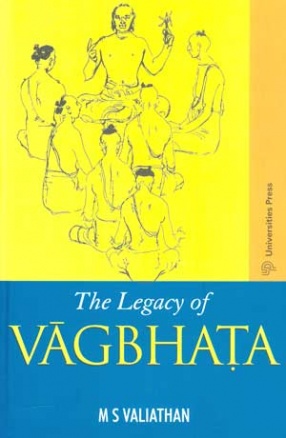
Showing all 6 books






In ancient India, learning spanned four quarters of one's life. Learning was sought from the teacher, from one's individual effort, from fellow students and in the last quarter, from the school of life itself. This book belongs to the third quarter for students of Ayurveda regardless of their background in medicine, science, or humanities. Apart from topics in the eight branches of Ayurveda, the book also deals with Ayurvedic Biology which seeks to study the ...

This book is an introduction to Ayurveda, the ancient system of medicine that had been practiced in the Indian subcontinent for several centuries. It seeks to acquaint the reader, without too many technical details, with the evolution of Ayurveda from its religious moorings to one based on reason and examination. It also discusses the strong influences of Buddhist thought on the development of Ayurvedic practices. The instruments and techniques used as well as ...

Susruta’s name is synonymous with India’s surgical inheritance. A legendary figure, he is believed to have lived and taught in Varanasi several centuries before the Buddha, and composed the Susruta Tantra which became a timeless medical classic. Though the original text was lost long ago a redaction by Nagarjuna survived as Susruta Samhita and won universal acclaim. The Samhita is a study of the human condition in health and disease with undisguised ...

Caraka, the master physician, is believed to have lived in the first century AD. The Samhita--composed by him forms the bedrock of Ayurvedic practice today. His contribution to India’s cultural inheritance was profound. Caraka Samhita– was, in fact, a revision of an older text Agnivesa--Tantra, which was written several centuries before Caraka’s time. Caraka’s revision became so popular that it was translated into Tibetan, Arabic, English ...

Vagbhata completes the “Great Three” (Brhatrayi) of Ayurveda, with his predecessors, Caraka and Susruta. His identity and period are controversial but a major section of the scholarly community believes that he was a native of Sindh, who lived in the sixth century and write Astangahrdayam and Astangasngraha. The two texts frankly acknowledge the authority of Samhitas of Caraka and Susruta and closely follow in the footsteps of the earlier masters.The ...

Caraka, the master physician, is believed to have lived in the first century AD. The Samhita composed by him forms the bedrock of ayurvedic practice today. His contribution to India's cultural inheritance was profound. Caraka Samhita was, in fact, a revision of an older text Agnivesa Tantra, which was written several centuries before Caraka's time. Caraka's revision became so popular that it was translated into Tibetan, Arabic, English and many Indian languages. ...
